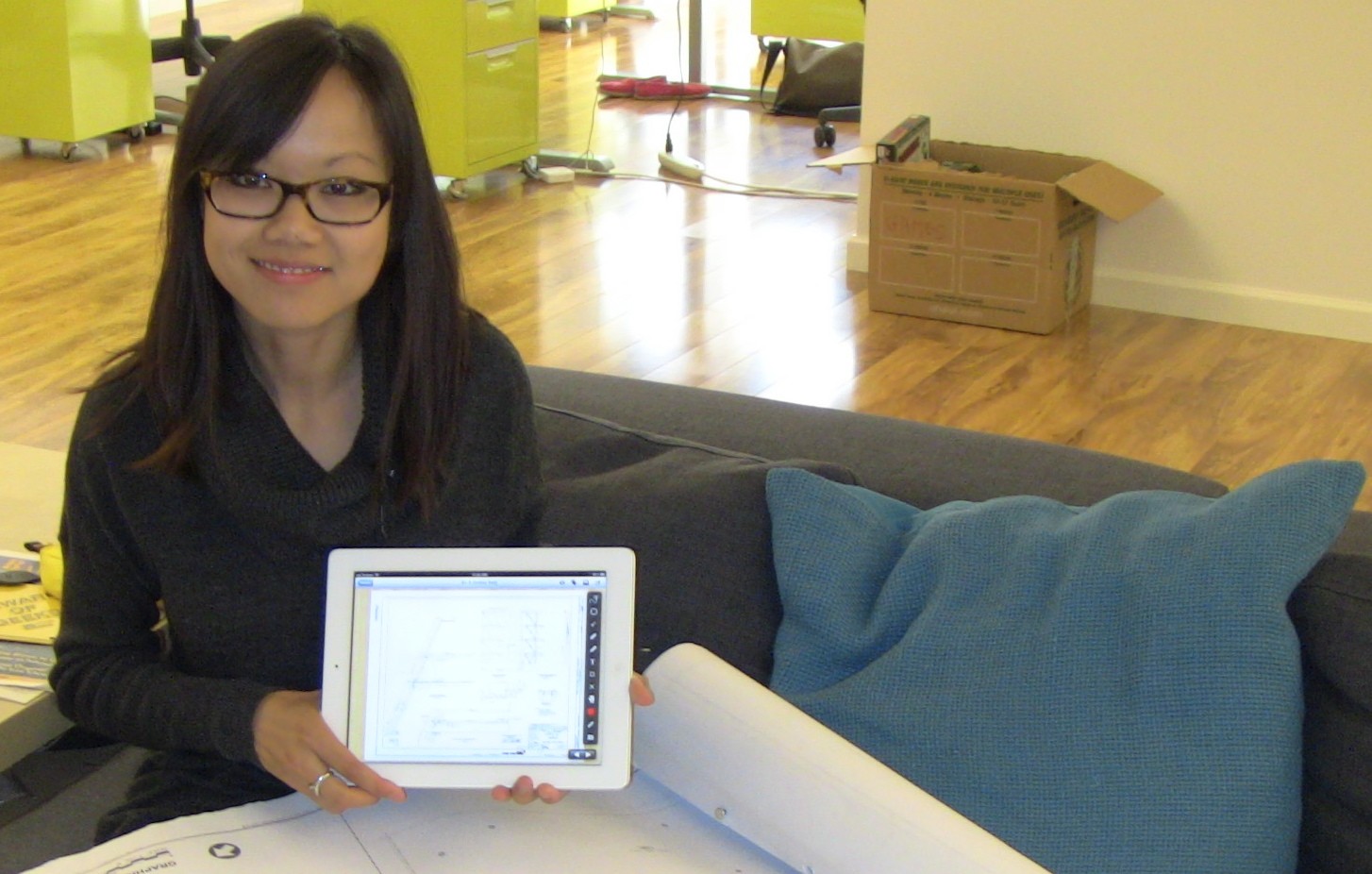By Alison van Diggelen, host of Fresh Dialogues
Last week, Fresh Dialogues visited PlanGrid, the recent Y Combinator startup winner that’s tackling what some call the “insane paper” problem that the construction industry produces. Computer-Aided Design (or CAD) works well as a green and efficient solution for the design phase, but once on the field, architects, site managers and construction supervisors still have to lug around giant reams of blueprints. Thirty year old CEO Ryan Sutton-Gee explains how he had a lightbulb moment when the iPad came out and COO Tracy Young demonstrates their solution. Using the cloud, PlanGrid can upload up to 60,000 blueprints to an iPad, and enable construction teams to edit, update, tag photos and instantly share information as construction progresses. Sutton-Gee likens the on-site photo tagging ability to Instagram, with automatic uploads allowing construction teams to verify time, date and location information at each stage in the construction.
Here are some highlights from my conversation with Sutton-Gee and Tracy Young:
On the Paper Problem
“Our estimate is that $4 Billion was spent in 2011 just on paper in construction alone, which is a ridiculous. It’s an insane about of paper. It’s an insane amount of trees.”
On the PlanGrid Solution
“There are the hard cost savings of reducing paper and then there are the soft cost savings of saving time and reducing rework. On several projects, we’ve reduced the paper consumption by 90%.” PlanGrid CEO Ryan Sutton-Gee
“You could fill up all of downtown San Francisco with paper – that’s how many trees we’re saving.” PlanGrid COO Tracy Young
On Silicon Valley
“We are being used by very large Silicon Valley companies – that everyone is familiar with – to build some of their office spaces. (Apple’s new campus perchance?) People in Silicon Valley are always up with tech. They’re the early adopters in everything, including us.”
On Y Combinator and Startup Advice
“It was really great with Y Combinator. The most important thing that took a while to realize is that it’s actually not that risky…Even if everything had gone totally wrong for us, at worse I would have spent six months working on something I was really passionate about…That was the opportunity cost… If you’re in an industry and there’s a huge problem and there’s a technically feasible solution…go for it!”
This is part two of our four part series on The Future of Green Building, sponsored by Webcor Builders




